Dealing with old or unused files will help keep a Linux system fast, clean, and easy to navigate. Logs, backups, and temporary files grow over time and slowly fill storage that users rarely clear. Automatic cleanup process avoids mess and maintains the smooth running of the system without manual work.
This guide explains how to delete files older than 7 days on Linux or even 30 days using simple, dependable commands. You will learn practical methods, safe cleanup options, and ways to automate regular cleanup. With these steps, beginners and advanced users can manage storage more efficiently and confidently.
Try Recoverit to Perform Linux Data Recovery

In this article
Part 1. Why You Might Need to Delete Old Files on Linux
Before cleaning up your system, understand the following reasons explaining why removing old files matters:
- Free Disk Space: Old files build up fast and may take space valuable storage space. On the one hand, when space is limited, applications will not open, updates will not respond, and the entire system can become unstable.
- Better Search: Large folders slow down search, backups, and loading files throughout the system. Deleting idle files can significantly enhance system performance and responsiveness.
- Reduced Security Threats: Dumps or old logs may contain sensitive information that cannot be stored long-term. Deleting them reduces the chance of exposing data that should not be kept for long.
- Policy Compliance: Some workplaces require deleting stored data after a set and approved time. Regular cleanup helps systems remain aligned with legal and internal company rules.
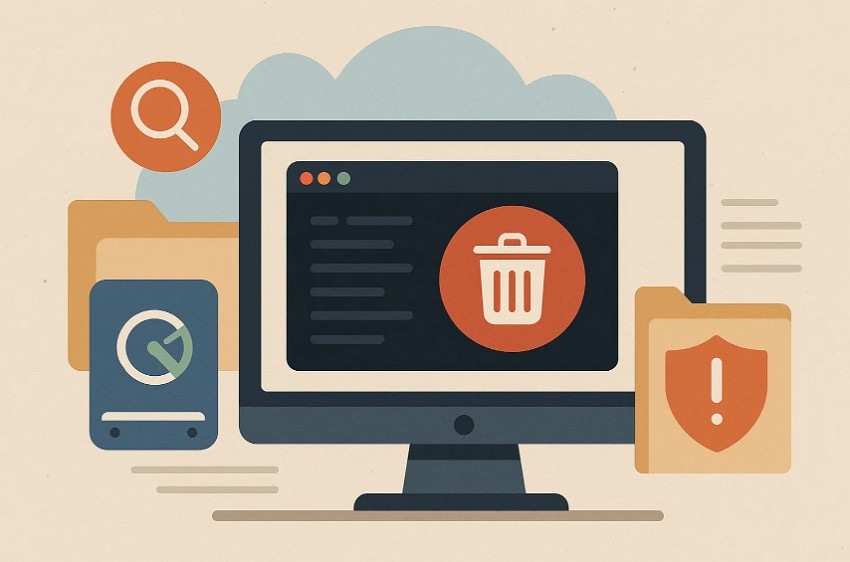
Part 2. Step-by-Step Ways to Delete Files Older Than 7 or 30 Days
Once you've understood the reasons to delete older Linux files, review the following ways to delete files older than 7 or 30 days:
1. Delete Old Linux Files Using the Find Command
The find command removes outdated data by checking file age and deleting only files matching your chosen limit. Moreover, this method reduces manual cleanup work while giving strong control through filters like path, type, and name. It is especially helpful when users must delete files older than Linux systems safely retain. With the basics understood, we can now proceed to the steps below:
- First, list old files without deleting anything: "find /var/log/myapp -type f -mtime +30 -print." Next, review the listed files to confirm they are safe to remove from the directory.
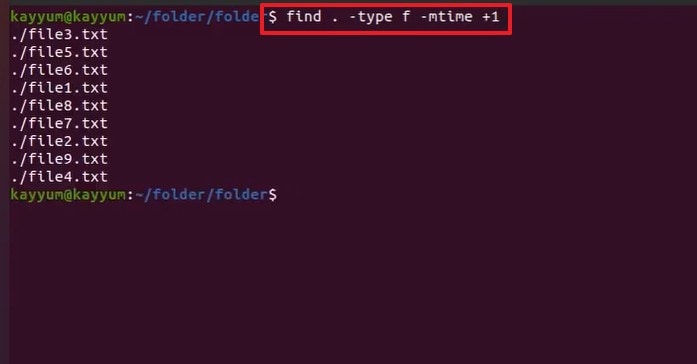
- Afterwards, delete the files older than 30 days: "find /var/log/myapp -type f -mtime +30 -delete."
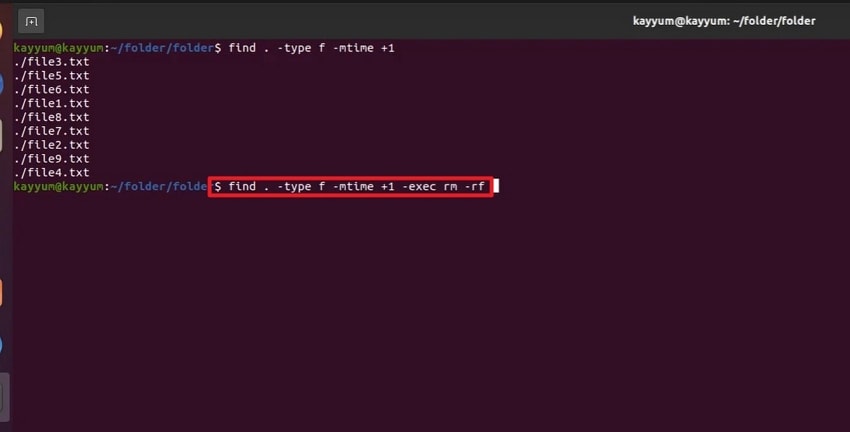
2. Deletion of Linux Files Using Cron Job and Find Command
Cron works with find to clear files that pass a set time limit. This keeps storage steady on active systems. Additionally, this scheduled process prevents space overload and keeps disk behavior easy to expect. It is commonly applied when teams must delete files older than 30 days in Linux environments during regular cleanups. Now that cron automation is understood, we move to the steps below using -exec and -delete:
Using the 'find' Command With the -exec Option
- First, preview old files to see what will be removed: "find /var/log/myapp -type f -mtime +7 -print."
- Next, use -exec to delete each file safely: "find /var/log/myapp -type f -mtime +7 -exec rm -f {} \;". Afterwards, confirm deletion by checking the folder to ensure only the intended files were removed.

Using the 'find' Command With the -delete Option
- To start, list the old files that match your time limit: "find /var/log/myapp -type f -mtime +7 -print".
- Later, delete the matching files directly using: "find /var/log/myapp -type f -mtime +7 -delete". After that, verify the cleanup by reviewing the directory to confirm the deletion worked correctly.
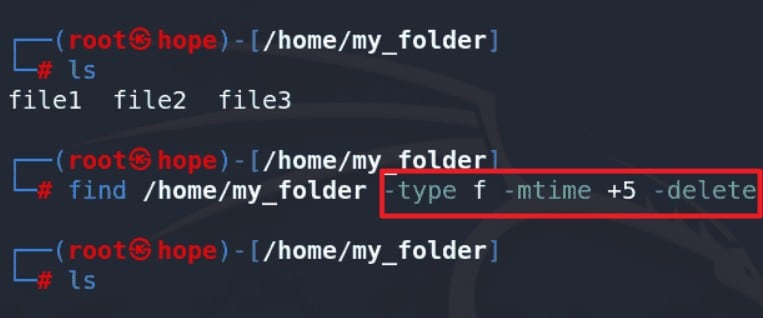
3. Scheduling the Auto-Deletion Task of Old Linux Files With Cron Job
A cron job runs cleaning commands at fixed times, ensuring long-term stability by removing old data consistently. Moreover, it eliminates manual reminders and protects storage from extra files piling up across important directories. Admins often use this reliable method when they need to delete old files that Linux servers generate over time. Let's walk through the following scheduling steps to help you finish setup:
- First, open the cron editor by running "crontab -e" to create your scheduled cleanup task.
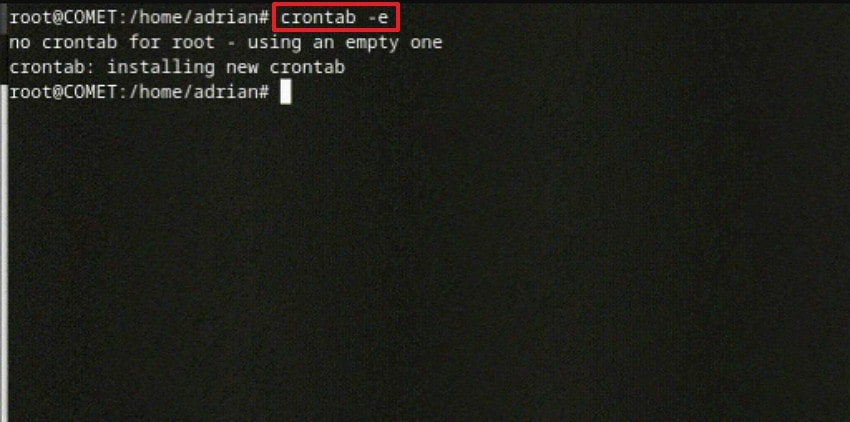
- Next, add a daily cleanup at 3:00 AM: "0 3 * * * find /var/log/ -type f -mtime +30 -delete". After that, save and exit so the cron service loads your scheduled cleanup and runs it automatically.
Pro Tip: Protect Your Important Files Using Recoverit Before Cleanup
Using a recovery tool like Recoverit adds an extra layer of safety before cleanup begins. Moreover, Recoverit scans drives, USB drives, and cards to recover deleted files. It supports accidental deletion, formatting issues, lost partitions, and system crashes effectively. These abilities help protect your data when you find and delete old files in Linux.
In addition, Recoverit shows simple steps that protect your data before cleanups start. Its clear layout helps you check recovered files without stress or wasted time. The preview option lets you see important items that should be brought back first. Therefore, this careful process makes cleanup safer and lowers the chance of losing data.
Key Features
- Linux Recovery: Supports Linux recovery, allowing users to scan EXT disks and restore deleted files.
- Batch Processing: Restores many files at the same time, allowing users to recover large folders in one process.
- Crash Recovery: Start recovery when systems fail to boot by creating bootable media that rescues lost data.
Detailed Guide to Recover Lost or Accidentally Deleted Linux Files with Recoverit
To learn how Recoverit helps in recovering lost or accidentally deleted Linux files, go through the guide provided below:
- Run the Linux Recovery Mode
Upon launching Recoverit, navigate to the "Other Tools" option to further select the "Linux Recovery" button.
- Connect to the Ubuntu System via SSH
Afterwards, enter the "IP Address," "Password," "Port," and "User Account" to later choose the "Connect" option from the bottom right corner.
- Step 3. Preview and Recover the Lost/Deleted Linux File
Once the automatic Linux scan concludes, it previews the files that were lost or accidentally deleted. Preview and select the files that you wish to recover, and hit "Recover" to conclude the process.
Conclusion
Managing old data keeps your Linux system fast, clean, and stable over time. In this article, you learned safe ways to delete files older than 7 days on Linux using find and automated cron cleanups. These methods help prevent storage issues and improve system performance. If you accidentally delete a valuable Linux file, Recoverit is a dependable tool for getting it back safely.
FAQ
1. Why should I delete old files in Linux?
Deleting old files frees space and keeps your Linux system running smoothly. It also reduces clutter and prevents problems caused by full storage.2. Is the find command safe for deleting old files?
Yes, the "find" command is safe when tested without deleting first. Always preview results to confirm that only the intended files get removed.3. Can I automate file cleanup in Linux?
Yes, cron job can automate cleanup tasks using scheduled find commands. This ensures regular maintenance without requiring repeated manual actions.4. What if I delete an important file by mistake?
You can recover deleted files easily using a trusted tool like Recoverit today. It scans storage devices and restores important data safely without causing further issues.




 ChatGPT
ChatGPT
 Perplexity
Perplexity
 Google AI Mode
Google AI Mode
 Grok
Grok























